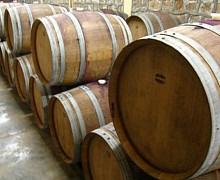Hauntingly picturesque, Inle Lake lies at an altitude of nearly 3,000 feet, fringed by tall grasses and reed beds, ringed by well-forested hills and, according to the season, may often be wreathed in mist. The main body of the lake is some 13 miles in length with calm, crystal clear waters. Its shores and floating islands are home to villages built on stilts, whose inhabitants are the hardworking and resourceful Intha people. These are the famous leg rowers, skilfully navigating the lake by rowing in a standing position – one leg wrapped around an oar pivoted on their hip, another leg balancing on the prow of their boat, and body poised to plunge a fish trap into the waters beneath. In addition to their fishing skills, the Intha are traditional market gardeners, cultivating flowers and vegetables on a floating tangle of water hyacinth and silt anchored to the lake bed by bamboo.
Moreover, Inle Lake is an official bird sanctuary, rich in wildlife. Its main body is reached along a narrow waterway from the northernmost lakeside town of Nyaungshwe. The boat ride passes waterside temples and villages, and in the less populated stretches, herons stand in solitary contemplation at the water’s edge while cormorants dive for their prey. In the principal part of the lake, there are many islands to visit. Away from these developed areas, a leisurely canoe paddle through channels branching from the lake brings a closer view of the local life, with fascinating encounters and friendly villagers. Heading south from the main body of the lake the traveller passes through another long and narrow waterway to reach the 17th century ruins of Sankar, where Shan and Pa-O villagers now live side by side, and the ancient Tharkong Pagoda, which legend tells was founded by an early Burmese king.
The region offers ample trekking opportunities and extended walks to keep the active traveller busy. Trekking out into the Shan hills east of Nyaungshwe, at the lake’s northern end will lead to Pa-O villages and beautiful views of the lake along the way. Extended walks through rice paddies pass many Shan stupa ruins that lie dotted around the countryside. Besides the Buddhist teachings, nats (spirits) have a special place in Myanmar culture. A large nat shrine located in a grave of banyan trees by the lake shore is accessible only by canoe. The trees that surround the shrine have been allowed to grow into a swampy jungle as no one dares to cut them down for fear of attracting the spirit’s wrath.
FESTIVALS
Phaung Daw U Pagoda Festival
1st Full Moon Waxing Day of Thadingyut, Mid-Autumn, Myanmar Lunar Calendar, Inle Lake in Shan State.
In September and October, the lake hosts the famous Phaung Daw U festival, when leg rowing competitions are held throughout the eighteen day event. Nearly a hundred one-legged rowers balance and synchronize their movements on a larger version of their usual fishing boat to showcase skills against competing teams. The main event, however, revolves around the four revered Buddha statues, which are taken from the Phaung Daw U Monastery at the centre of the lake, mounted on a colourful royal barge, and ceremoniously transported clockwise around its shores to spend each night at a different village. A fifth Buddha statue now never leaves the Phaung Daw U Monastery: Centuries ago, so legend tells, the sacred image fell beneath the waters of the lake during the procession and was thought to be lost, but then miraculously made its way back to the monastery.
Balloon Flying Festival
10th Full Moon Waxing Day of Tazaunmon, 8th Month of the Burmese Lunar Calendar, Taunggyi in Shan State.
The festival’s origins come from the practice of floating one’s sins and bad deeds away via lanterns during this time of the year. During the day, the balloons form a glorious kaleidoscope of colours and shapes. In the evening, the light show created by the sheer number of balloons outshines the stars. The event has become something of a competition for the biggest, brightest and most elaborate hot air balloons, at times dripping with fireworks or weighed down by candles. The balloons often compete not only for most creative designs but the altitude gained. The atmosphere in the town during the festival is joyous and welcoming.







